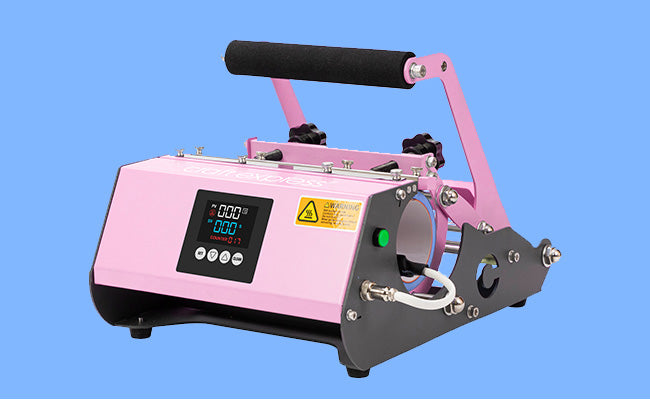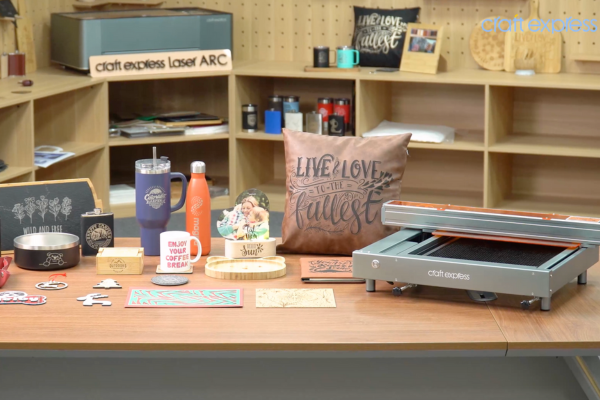
How to Take Professional Product Photos and Create High-Quality Mockups
High-quality product photography is one of the most important factors in driving sales for handmade businesses. Customers judge products in seconds based on images, and clear, well-lit photos can significantly increase conversions on Etsy, Shopify, and social media.
This guide covers essential tips for taking professional product photos, creating stunning mockups, and optimizing images for search engines and social media to make handmade products look polished and professional.
Why High-Quality Product Photos Matter
Online shoppers rely solely on images to decide whether to purchase a product. Poor-quality photos can make even the best products look unappealing, while professional images can help build trust and boost sales.
The Benefits of Professional Product Photography:
-
Creates a strong first impression and attracts potential buyers.
-
Helps customers visualize products, increasing conversion rates.
-
Improves search rankings on Etsy, Google, and social media platforms.
-
Increases perceived value, allowing businesses to charge higher prices.
Studies show that customers are 70% more likely to buy a product with high-quality images, making professional photography an essential part of any craft business strategy.
Step 1: How to Take High-Quality Product Photos
Professional photography does not require expensive equipment. With the right lighting, background, and angles, even a smartphone camera can produce high-quality images.
1. Lighting: The Key to Professional Photos
-
Use natural light by placing products near a window with soft, indirect sunlight.
-
Avoid harsh shadows by using diffused lighting (curtains, softbox lights, or ring lights).
-
If shooting indoors, use consistent artificial lighting to maintain image quality.
2. Choosing the Right Background
-
A white or neutral background keeps the focus on the product. Foam boards or poster boards work well.
-
Avoid cluttered or distracting backgrounds.
-
Use lifestyle setups to showcase products in real-life situations, such as a tumbler on a coffee table or a t-shirt on a hanger.
3. Angles and Composition for Maximum Impact
-
Take 5-7 images per product to show all angles:
-
Front view
-
Side view
-
Close-up of details
-
Lifestyle shot (product in use)
-
Packaging shot (if applicable)
-
Use the rule of thirds to create balanced, visually appealing images.
-
Ensure sharp focus and avoid blurry shots by using a tripod or steady hand.
A product should be photographed in a way that allows customers to fully understand its features and quality before making a purchase.
Step 2: How to Create High-Quality Mockups
Mockups allow businesses to showcase designs without having to create every single product physically. This saves time and money while maintaining a cohesive brand aesthetic.
1. Benefits of Using Mockups
-
Reduces production costs by eliminating the need to make every variation of a product.
-
Provides a consistent, polished look across product listings.
-
Allows customers to visualize customization options before purchasing.
2. Where to Find High-Quality Mockups
-
Creative Market & Etsy – Pre-made mockup templates for various products.
-
Canva & Placeit – Easy-to-use mockup generators with drag-and-drop functionality.
-
Smart Mockups – Integrates with Shopify for instant product previews.
3. How to Create a DIY Mockup
-
Take a high-resolution photo of a blank product (such as a plain white mug or t-shirt).
-
Use Canva or Photoshop to overlay the design onto the blank space.
-
Adjust shadows and perspective to ensure a realistic, natural look.
Mockups are particularly useful for sublimation and print-on-demand businesses, where showcasing multiple designs without printing each one can streamline operations.
Step 3: Editing for a Professional Look
Even well-lit photos benefit from slight adjustments to enhance brightness, sharpness, and color accuracy.
1. Best Free Photo Editing Apps
-
Snapseed – Adjusts brightness, sharpness, and white balance.
-
Lightroom Mobile – Offers advanced color correction and preset filters.
-
Canva – Useful for adding text, branding elements, and resizing for social media.
2. Editing Tips for Product Photos
-
Brighten images while keeping colors true to life.
-
Crop and straighten to ensure the product is centered and framed properly.
-
Remove distractions such as dust, wrinkles, or background clutter.
A consistent editing style across all product images helps establish a recognizable brand identity.
Step 4: Optimizing Images for Search Engines and Sales
Uploading high-quality images is just the first step. Proper optimization ensures that product photos rank higher in search results and load quickly on websites.
1. File Naming & SEO Optimization
-
Rename image files before uploading to improve SEO rankings.
-
Instead of "IMG_1234.jpg," use "personalized-sublimation-mug-custom-coffee-gift.jpg."
-
Add alt text when uploading images to Etsy, Shopify, or websites. This helps Google index product images, making them more discoverable.
2. Image Sizes & Formats for Faster Loading
-
Use JPEG or PNG for high-quality images.
-
Keep file sizes under 2MB to ensure fast website loading speeds.
3. Optimizing for Social Media Engagement
-
Instagram & TikTok: Use square (1080x1080) or portrait (1080x1350) images for better visibility.
-
Pinterest: Upload vertical images (1000x1500) since Pinterest favors tall images with 80% more engagement.
Properly optimized images improve website performance, boost search visibility, and enhance customer experience.
Final Steps to Improve Product Photography and Mockups
-
Use Proper Lighting – Natural or soft lighting improves image clarity.
-
Keep Backgrounds Simple – A clean background ensures the product is the main focus.
-
Showcase Multiple Angles – Providing detailed views helps customers make informed decisions.
-
Incorporate Mockups – Mockups save time and create a polished, cohesive brand aesthetic.
-
Edit Consistently – Adjust brightness, sharpness, and color for a professional appearance.
-
Optimize Images for SEO – Rename files, add alt text, and ensure fast-loading sizes.
High-quality images are a powerful tool for increasing online sales and brand credibility. Implementing these photography and mockup strategies will help craft businesses attract more customers and boost conversions.




Leave a comment
This site is protected by hCaptcha and the hCaptcha Privacy Policy and Terms of Service apply.